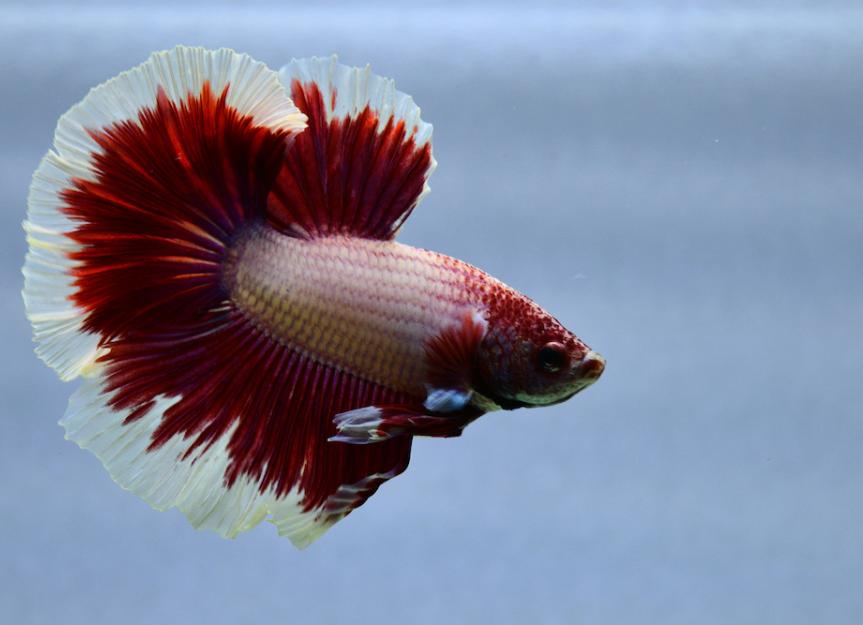Betta Fish Tank Configuration: A Step-by-Step Overview for Beginners
Betta Fish Tank Configuration: A Step-by-Step Overview for Beginners
Blog Article
How to Breed Betta Fish Successfully: Expert Methods and Insights for Hobbyists Wanting To Broaden Their Betta Collection
Reproducing Betta fish calls for a nuanced understanding of genetics and environmental conditions, making it essential for enthusiasts to approach the procedure with both diligence and treatment. Producing an optimal breeding atmosphere, selecting the appropriate pairs, and observing the intricacies of their courtship habits are foundational steps that can significantly influence the result.
Recognizing Betta Fish Genes
Understanding the genetics of Betta fish is critical for effective breeding, as it affects characteristics such as shade, fin form, and actions. Betta fish show a diverse selection of shades and patterns, mostly established by their hereditary makeup. The primary genes in charge of pigmentation include the "B" gene for blue, "D" genetics for red, and the "C" genetics for color intensity. Dog breeders can adjust these attributes by choosing details parent fish that display desired qualities.
Along with pigmentation, fin morphology is one more substantial element of Betta genetics (betta fish). The form and size of fins are influenced by numerous genes, consisting of those that identify whether the fins are brief, long, or veil-shaped. Understanding these hereditary variations aids breeders predict the phenotypic results of their children
Additionally, behavioral traits such as aggressiveness and territoriality can likewise be influenced by genes. These actions play an essential function in the breeding process, as they can impact generating success and the overall character of the resulting fry. By thoroughly comprehending these hereditary concepts, breeders can make enlightened decisions, ultimately improving their reproduction programs and achieving desirable outcomes.
Preparing the Breeding Setting
Developing an ideal reproduction atmosphere is vital for the effective recreation of Betta fish. The very first step in preparing this atmosphere is to select a suitable breeding storage tank, preferably ranging from 5 to 10 gallons.
Following, take into consideration using a sponge filter or an air stone to give gentle water circulation without creating solid currents that can stress the fish. It is vital to install plants or breeding cones to provide concealing spots and advertise convenience for the female throughout the spawning process. Drifting plants, such as Java moss or water sprite, can also develop a much more native environment while assisting in bubble nest structure by the male.
Prior to presenting the reproducing sets, make sure the water is conditioned and without damaging chemicals, such as chlorine or heavy metals. betta fish. Regular water modifications need to be conducted to preserve ideal water quality, boosting the chances of effective reproduction. With these prep work in position, the reproducing environment will certainly support the health and wellness of both Betta fish
Selecting Reproduction Pairs
Selecting the appropriate reproduction pairs is vital for accomplishing effective Betta fish recreation. Healthy and balanced Betta fish display lively shades, clear eyes, and energetic habits.
Temperament is one more important factor to consider, as Betta fish are recognized for their hostile nature. It is suggested to select a male and female that display suitable temperaments to reduce tension during the breeding procedure. A calm male can encourage a smoother courtship, while a lady that is too hostile might interrupt the procedure.
Genetic background likewise plays a substantial duty check my site in the top quality of the children. Breeding fish that are genetically varied can lower the danger of hereditary wellness concerns and enhance the total vitality of the fry. It is advantageous to investigate the lineage of both the man and female, concentrating on preferable attributes such as fin type, color scheme, and size.
The Reproduction Process
The breeding procedure of Betta fish calls for cautious preparation and focus to information to make sure a successful result. It is important to prepare a suitable breeding container, preferably a 5-10 gallon aquarium with a temperature maintained at 78-80 ° F. The tank should be geared up with a heater, filter (preferably sponge kind to stay clear of strong currents), and a lot of water plants for the female to hide.
When the environment is established, introduce the picked reproducing pair to the tank, permitting them to adapt. Observe their behavior; the man will show fancy courtship routines, consisting of flaring his fins and developing a bubble nest. If the lady shows interest, she will show vertical red stripes indicating readiness for spawning.
When the lady is responsive, the set will certainly engage in a mating accept, throughout which the male feeds the eggs. Maintaining ideal water conditions during this period is necessary for the growth of healthy and balanced Betta fry.
Caring for Betta Fry

Feeding Betta fry is critical, as they require a diet regimen high in healthy protein. They can be fed infusoria or fluid fry food, transitioning to finely crushed high-grade pellets as they expand. Feed tiny parts several times a day to encourage healthy growth without overwhelming the container with leftover food.

As they grow, check their growth closely and divide any aggressive individuals to avoid damage. By giving a supporting environment and correct nourishment, hobbyists can effectively increase Betta fry right into lively, healthy fish, inevitably boosting their reproduction endeavors.
Final Thought
Successful Betta fish breeding needs thorough focus to hereditary selection, environmental problems, and look after the fry. By understanding the genetics of Betta fish and preparing an ideal reproduction setting, enthusiasts can boost the chances of producing vibrant, healthy and balanced spawn. Selecting compatible breeding pairs and very closely keeping track of the courtship and spawning procedures are essential. Finally, supplying optimum take care of the fry guarantees their healthy advancement, contributing you can look here to a thriving Betta collection.
Report this page